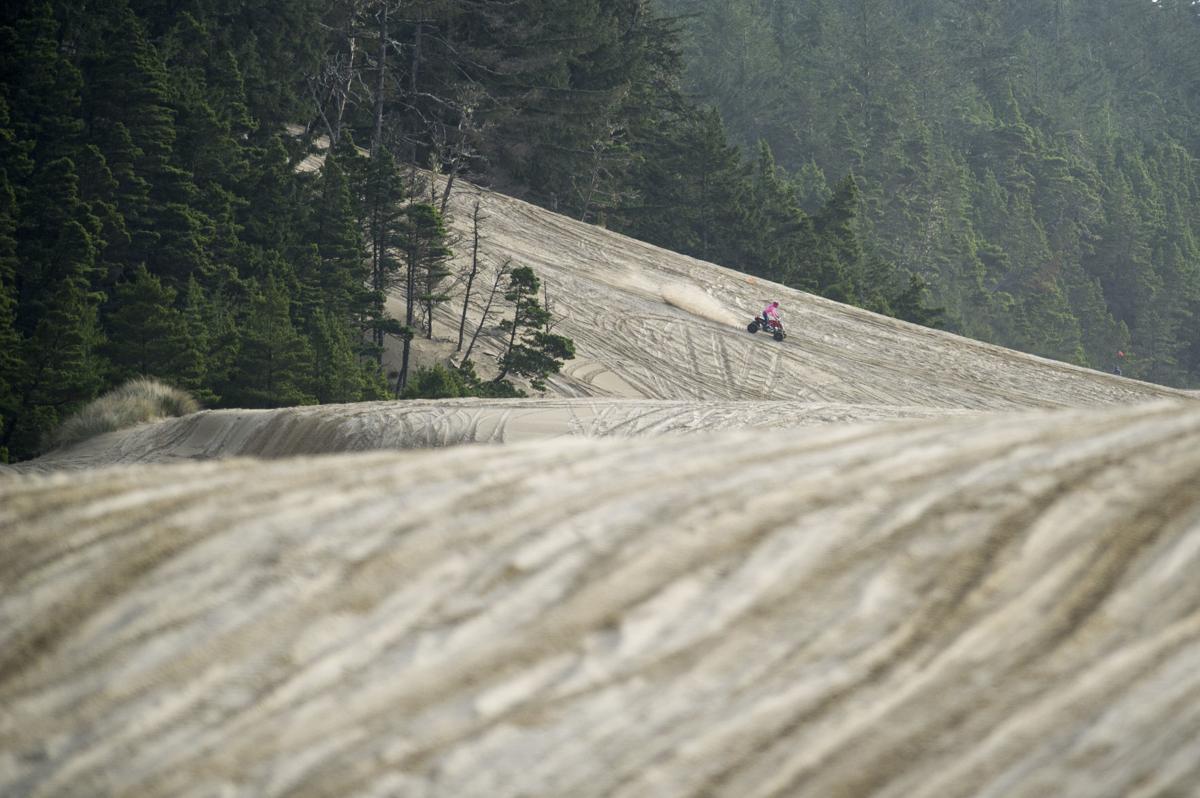COOS COUNTY — In a presentation last week to Coos County Commissioners, the Oregon Dunes Restoration Collaborative discussed the importance of preserving the dunes and restoring its lands.
ODRC outreach coordinator Jeff Malik informed commissioners of the work the group has been doing over the last year and cluing them in on its progress. Since 1941, about 65 percent of the dunes have been lost, he said.
The group’s monitoring committee, which inspects aerial records from the USDA Forest Service, has noticed slowly over time invasive plant species such as European beach grass and Scotch Broom has taken over much of the open sands of the dunes.
“A lot of groups and community members with very different viewpoints realized that these invasive grasses could really threaten the dunes,” Malik said. “So, in 2014 the Siuslaw National Forest convened the ODRC to work with other organizations and interested parties to protect and preserve the dunes.”
Since then, the group has hosted numerous volunteer work days, which gathers crews from various locations throughout Oregon to pull and remove invasive species from the dunes.
This year, approximately 18 work days took place with hundreds of volunteers aiding in clearing areas. The Bull Run OHV Trail near North Bend was among one of the locations which received a work crew.
“We’ve gotten a lot of support from the OHV/ATV community as well as a number of elected officials and environmental groups,” Malik said. “The biggest help we’ve gotten in Coos County has come from ATV groups including the Save the Riders Dunes in North Bend, who were a big part of our project on Bull Run.”
According to the presentation, the dunes could be lost in less than 100 years if action isn’t taken. The group focuses on maintaining various sites throughout the dunes which need improvement, raising awareness through various outreach campaigns and protecting existing area where dunes are healthy and thriving.
“The dunes shouldn’t only be sand,” Malik said. “There are naturally little pockets of wetlands, native plants and natural tree islands scattered about. But, what we are seeing are these invasive beach grasses turning everything into some uniform scrubby grass land.”
The dunes, which stretch from the California/Oregon border to the Columbia River, feature a unique ecosystem with over 400 species of wildlife, said Malik. The group focuses the section of the dunes which stretches from Coos Bay to Florence. In addition to the organized work days, the Forest Service has also begun bulldozing larger areas to remove beach grass followed by performing controlled burns or herbicide treatments.
Last year, Malik said the group received a letter of support from the Coos County Commissioners in its efforts to secure a grant from Travel Oregon. The group was awarded the grant, which provided funds for a range of outreach materials including informational brochures and posters.
“This was our first time in Coos County doing an outreach presentation,” Malik said. “We want to continue coming here and strengthening our partnerships.”
Along with the effects to wildlife and its habitat, Malik pointed out to commissioners the potential impact the loss of the dunes could have on tourism to the area. In Coos County, about $270 million was spent by visitors to the area in 2017. The dunes he pointed out were a big attraction to tourists engaging in recreational activities and contributing to the local economy.
On June 6, the ODRC will present a lecture on the dunes and its disappearing landscape at the Coos History Museum in its Sprague Gallery in Coos Bay. Sometime in the spring, the group is planning on hosting a volunteer recruitment event in Coos County, but has not confirmed a date.
“If we’re unable to save the dunes then we’ll lose acres of natural habitat, wildlife and economic benefits,” Malik said. “I hope that we could start some volunteer activities down here as a way to help the cause and preserve our dunes.”
Originally published in the World
